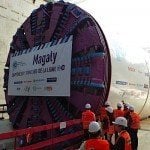In the realm of space exploration, the European Space Agency’s (ESA) Jupiter Icy Moons Explorer (Juice) stands as a monument to human ingenuity and the desire to unravel the mysteries of our solar system. Launched with the objective to explore Jupiter and its icy moons, Juice has the potential to significantly advance our understanding of the Jovian system[1]. Six weeks into its journey, the ESA’s Flight Control Team has successfully completed all necessary deployments on the spacecraft.
Since its departure, the spacecraft has seen the successful installation of all its solar panels, antennas, probes, and booms that were safely stowed away during the launch. The final step involved swinging out and locking into place the probes and antennas that comprise Juice’s Radio & Plasma Wave Investigation (RPWI). Angela Dietz, the deputy spacecraft operations manager for the mission, reported an exhilarating six weeks, filled with various challenges.
Space Selfies — Onboard Cameras
Each deployment is closely monitored by two onboard cameras that provide a constant feed of the process. These cameras not only captured Juice’s first space ‘selfies’, but also played an indispensable role in ensuring that all parts of the spacecraft deployed correctly. Through the lens of these cameras, the team on Earth has been able to watch as Juice transformed, preparing itself for the scientific endeavors that lie ahead.
Among the array of tools onboard Juice are ten instruments, each part of which is carried on antennas and booms that extend far from the spacecraft. This arrangement is crucial for those instruments that need to operate free from the spacecraft’s own electric and magnetic fields.
Juice will Answer Important Questions
The data gathered by these sophisticated tools will help answer some of the most pressing questions about Jupiter’s ocean worlds and the nature of gas giant planets. Specifically, Juice’s mission will contribute to our understanding of why Ganymede is unique, whether life could have ever existed in the Jupiter system, and how Jupiter’s complex environment has shaped its moons and vice versa.
The process has not been without its moments of suspense and surprise, however. The teams behind the instruments have been diligently working to ensure that all equipment is functioning as expected. They have already confirmed that Juice’s RPWI, JANUS, J-MAG, GALA instruments, and the RADEM radiation monitor, are ready for the mission to Jupiter. The RPWI, which took five days for its seven deployments, is particularly noteworthy. Comprising four Langmuir Probes and three Radio Wave Instrument antennas, the RPWI will be the first device ever to generate a 3D map of the electric fields around Jupiter.
The RPWI is set to measure variations in the electric and magnetic fields around Jupiter, as well as radio waves and cold plasma. Such readings will be pivotal in learning about how energy is transferred between Jupiter’s enormous rotating magnetosphere and the large icy moons Ganymede, Callisto, and Europa.
Insight on “Potential for Life”
Furthermore, the RPWI’s sensitivity to low frequencies will enable it to detect very weak electromagnetic signals from tides and currents within the sub-surface oceans of these moons. This ability brings forth the exciting possibility of gaining new insights into these subsurface oceans, contributing to our understanding of the potential for life in these extreme environments.
The RPWI team’s strategy in this endeavor is guided by a 3D design, which allows it to measure true physical observables such as energy and momentum without having to rely on theories or simulations to interpret the data. This capability gives the RPWI a unique advantage in producing accurate and objective data.
Data Transmitted to Earth
As the RPWI’s sensors have been deployed, each has been switched on to measure the difference they make. As they now collect data, it’s delivered to the onboard data processing unit and transmitted back to Earth. This process offers a tangible testament to the successful deployment of Juice’s integral parts and is the first significant step in its mission to further our understanding of the Jupiter system.
The final step of preparation involved the deployment of Juice’s Radio & Plasma Wave Investigation (RPWI). Angela Dietz, the deputy spacecraft operations manager for the mission, reflected on the demanding yet exhilarating six weeks it took to get Juice mission-ready. She mentioned the various hurdles the team had to overcome to get Juice into optimal condition for its scientific expedition to Jupiter.
Every single antenna and boom of Juice holds parts of some of its ten instruments. To prevent the spacecraft’s own electric and magnetic fields from interfering with these instruments, they are strategically placed at a distance from Juice. This thoughtful arrangement is integral to the collection of accurate data that will help answer significant questions about Jupiter and its moons.
But what kind of questions are scientists hoping to answer with Juice? The goals are as fascinating as they are varied. They wish to understand what Jupiter’s ocean worlds are like, why Ganymede is so unique, and if there could be – or ever have been – life in the Jupiter system. They also hope to unravel the complex relationship between Jupiter’s environment and its moons and seek to better understand the nature and workings of a typical gas giant planet.
Despite the distant positioning of Juice’s antennas and booms, the instruments themselves confirmed that everything deployed as planned. The teams behind these instruments have been turning them on and measuring to ensure that everything is operating as planned. The teams have already confirmed that Juice’s RPWI, and GALA instruments, as well as the advanced RADEM radiation monitor, are all set for the challenges of Jupiter.
Of particular interest in the past week has been the successful deployment of the Radio & Plasma Wave Investigation (RPWI) tools, including four Probes and three Radio Wave antennas. Together, these seven devices account for a large portion of the RPWI sensors that will measure variations in the electric and magnetic fields surrounding Jupiter, along with radio waves and cold plasma. This marks a significant milestone, signaling the readiness of the spacecraft for scientific discovery.
RPWI’s Primary Mission
RPWI’s primary mission is to generate the first-ever 3D map of the electric fields around Jupiter. The data derived will provide valuable insights into how energy is transferred between Jupiter’s enormous rotating magnetosphere and the large icy moons. This energy transfer plays a critical role in driving phenomena like the auroras on Ganymede and in Jupiter’s upper atmosphere.
Looking ahead, the next few weeks are set to be crucial for Juice. As more instruments are switched on and checked, the aim is to ensure all are in optimal working condition by mid-July. The mission is on track to perform the world’s first-ever lunar-Earth gravity assist in August 2024, which will significantly conserve the explorer’s propellant on its voyage.
The Juice mission represents an exciting new era in space exploration and the successful deployment marks a major step towards understanding the mysteries of Jupiter and its icy moons. As Angela Dietz remarked, the past six weeks have been both exhausting and exciting. Yet, the real excitement is yet to come, as the Juice explorer ventures deep into the cosmos.
Sources
[1]
































